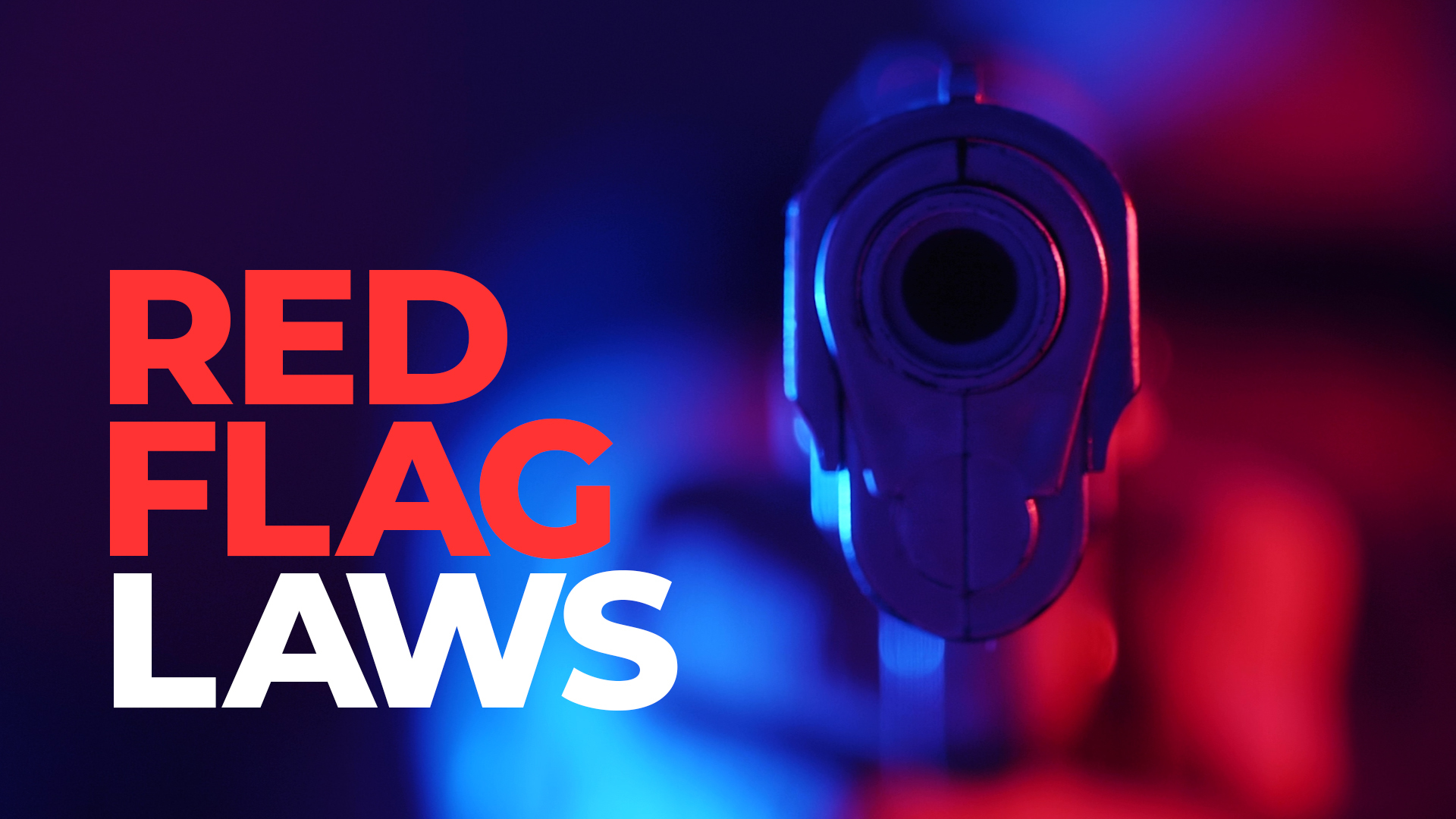
ANCHOR: ”breaking news: we’ve been covering a shooting at oxford high school. There are a handful of people – three people believed to be students are dead.”>
DISTRICT ATTORNEY: ”this individual was dangerous and disturbed.”>
TEACHER: “they knew the child was having some issues.”>
JIMMIE JOHNSON: IF MICHIGAN HAD A RED FLAG LAW, COULD THE TRAGEDY AT OXFORD HIGH SCHOOL HAVE BEEN PREVENTED? AND DO THESE LAWS WORK?
LET’S GET THIS STRAIGHT.
RED FLAG LAWS LAWS CAME FRONT AND CENTER…
ANCHOR: ”The Stoneman Douglas shooter discussing his plan of attack days before the massacre.”
JIMMIE: IN 2018, AFTER NIKOLAS CRUZ KILLED 17 STUDENTS AND TEACHERS AT MARJORY STONEMAN DOUGLAS HIGH SCHOOL IN PARKLAND, FLORIDA.
THE MASSACRE PROMPTED FLORIDA ALONG WITH ABOUT A DOZEN STATES TO ENACT RED FLAG LAWS AIMED AT PROTECTING A PERSON WHO IS A DANGER TO THEMSELF OR OTHERS BY TEMPORARILY TAKING AWAY THEIR FIREARMS.
NOW, 19 STATES AND THE DISTRICT OF COLUMBIA HAVE RED FLAG GUN LAWS ON THE BOOKS.
BUT, SOME GUN RIGHTS ADVOCATES SAY — “YOU CAN’T DISARM EVIL” AND CLAIM THE LAWS “LACK DUE PROCESS,”
REP. THOMAS MADDIE: “You are deprived of a constitutional right to protect yourself and your family until you prove that you are innocent. This is ridiculous and unconstitutional.”
JIMMIE: WHILE MANY RED FLAG LAW ADVOCATES BELIEVE THE LAWS “SAVE LIVES.”
REP. SYLVIA GARCIA: “This is not about taking guns away from people. This is about taking guns and keeping out of the hands of the wrong people.”
JIMMIE: IN 1999, CONNECTICUT BECAME THE FIRST IN THE NATION TO PASS A RED FLAG LAW.
IT WAS IN RESPONSE TO A DEADLY WORKPLACE INCIDENT A YEAR EARLIER.
THE NEW YORK TIMES REPORTED THE GUNMAN WAS EXPERIENCING “STRESS-RELATED PROBLEMS AND WAS UNDERGOING MEDICAL TREATMENT,” BUT NO ONE REPORTED HIS ALARMING BEHAVIOR TO AUTHORITIES.
THAT IS ONE OF THE ISSUES FACING RED FLAG LAWS ACCORDING TO A 2017 DUKE UNIVERSITY STUDY MANY PEOPLE DON’T REPORT ALARMING BEHAVIOR TO AUTHORITIES BECAUSE THEY DON’T KNOW THE LAW EXISTS.
PLUS, MANY STATE LAWS DIFFER OVER WHO CAN ALERT AUTHORITIES.
MOST STATES ALLOW ONLY LAW ENFORCEMENT AND FAMILY MEMBERS,
WHILE OTHER STATES INCLUDE DOCTORS, SCHOOL OFFICIALS, AND COWORKERS.
ON THE OTHER HAND, THAT SAME STUDY FOUND, RED FLAG LAWS WORK.
FOR EVERY 20 GUNS SEIZED, ONE SUICIDE IS PREVENTED. IT’S MORE DIFFICULT TO PINPOINT A NUMBER WHEN IT COMES TO THE PREVENTION OF MASS SHOOTINGS BUT REPORTS FROM LOCAL LAW ENFORCEMENT AGENCIES SAY IT SAVES LIVES.
SAN DIEGO IS ONE OF THEM. POLICE SAY A 53-YEAR-OLD HOSPITAL EMPLOYEE MADE COMMENTS ABOUT SHOOTING SEVERAL OF HIS CO-WORKERS AND STATED THEY “NEEDED TO DIE.” POLICE FOUND 11 FIREARMS AND MORE THAN 13,000 ROUNDS OF AMMUNITION AT HIS HOME.
AND IN FLORIDA, A BROWARD COUNTY JUDGE ORDERED 67 FIREARMS BE REMOVED FROM A BAILIFF’S HOME AFTER HE SIMULATED SHOOTING PEOPLE FROM THE FIFTH-FLOOR ATRIUM OF THE COURTHOUSE, CALLING THEM “EASY PREY.”
BUT SINCE MOST RED FLAG LAWS WERE RECENTLY ENACTED, LAW ENFORCEMENT AGENCIES DON’T HAVE ENOUGH DATA TO FORM A CONCLUSION.
WHICH IS WHY THE ISSUE IS STILL BEING DEBATED AT THE STATE AND FEDERAL LEVELS.
REP. LUCY MCBATH: “Some states stepped up, passed extremes risk protection orders, or as we call them, red flag laws. That empowers law enforcement and loved ones to take action and keep families safe before it’s too late. But as a country we didn’t do enough, we haven’t done enough.”
JIMMIE: SHOULD CONGRESS ENACT A FEDERAL RED-FLAG LAW OR LEAVE IT TO THE STATES TO DECIDE?
LET ME KNOW YOUR THOUGHTS IN THE COMMENTS BELOW AND BE SURE TO RATE THIS STORY USING OUR BIAS METER.









